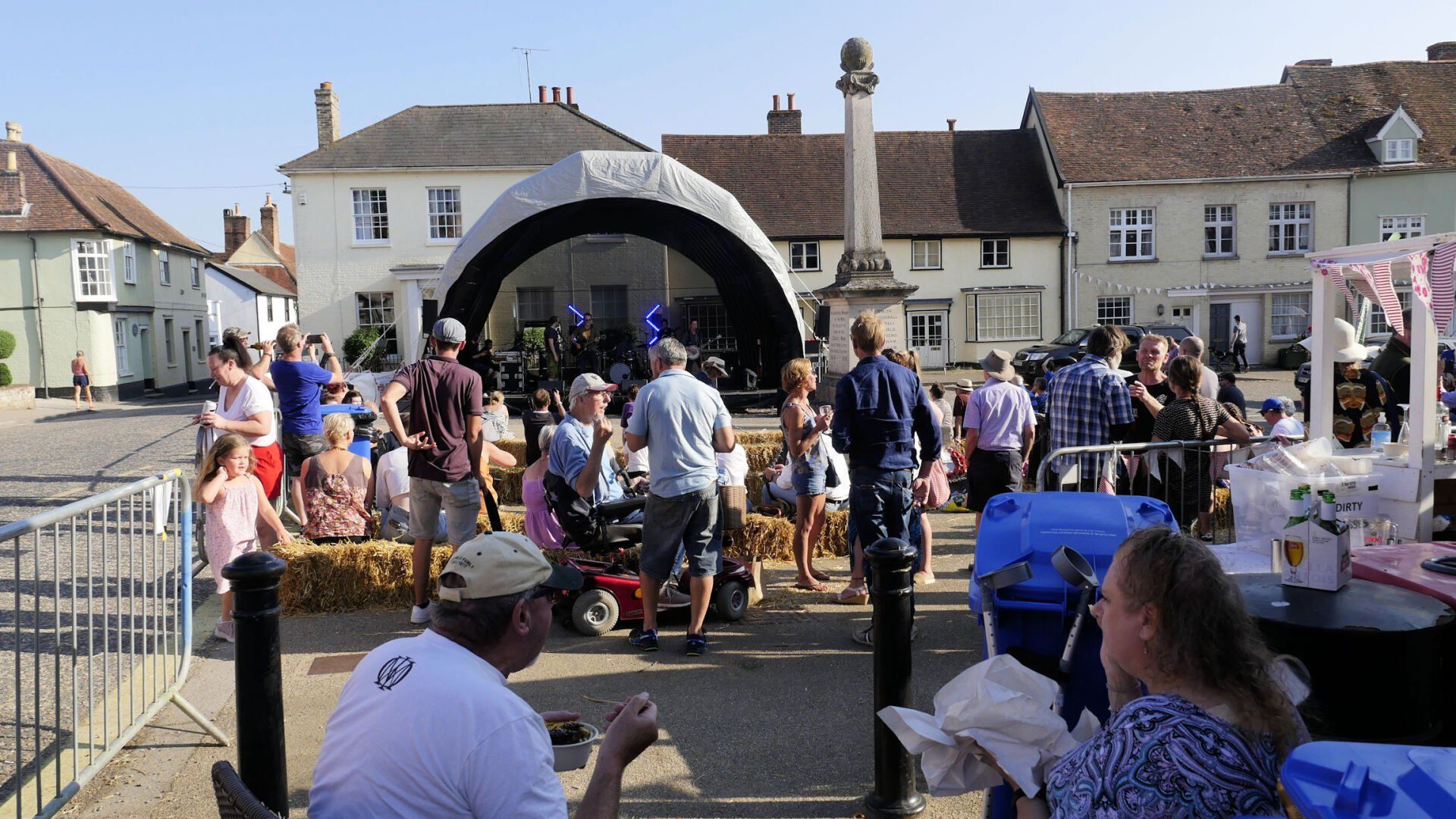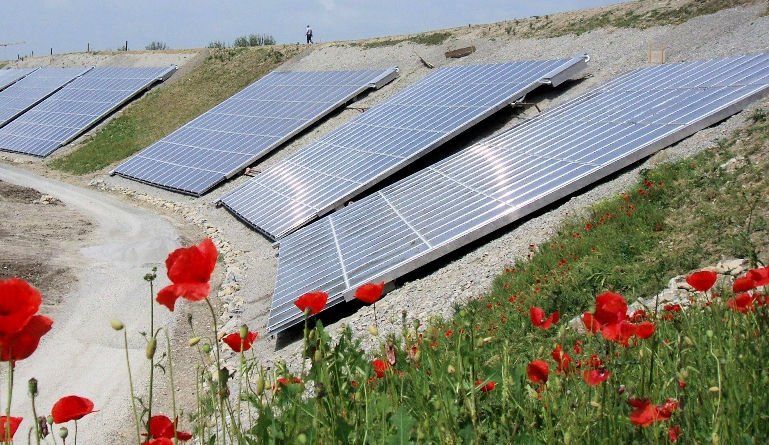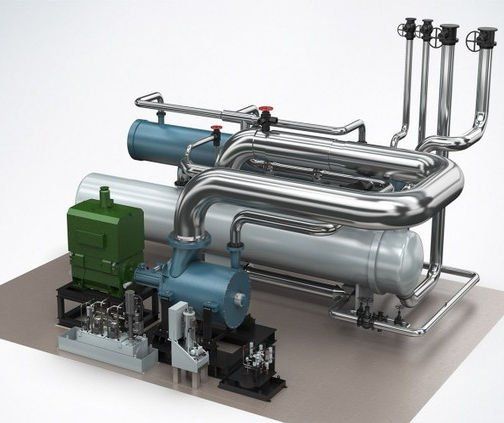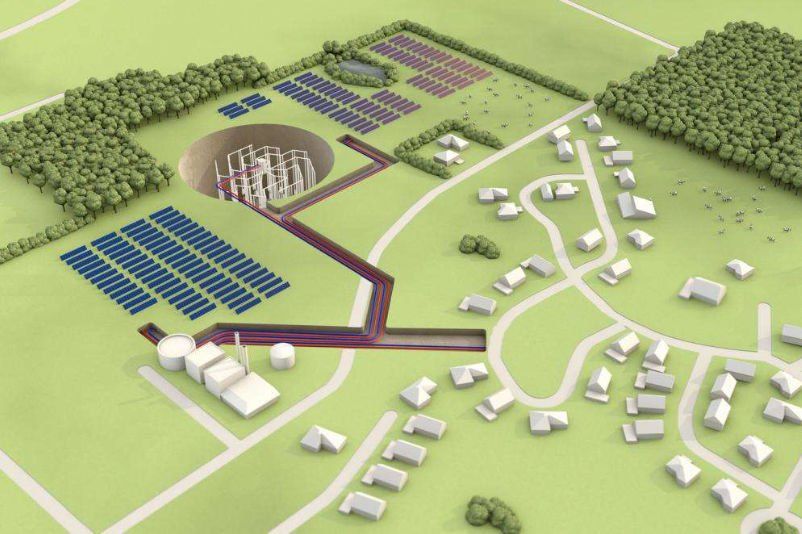Heating Bildeston Feasibilty Study 2023
Heating Bildeston aims to install a heat network which will provide you with heat for your hot water and radiators that is both cheaper and better for our planet. As a community project, with the support of our village, we hope to:
- Save residents money with lower cost energy.
- Avoid heating cost fluctuation by using renewable energy.
- Reduce our carbon footprint to help combat climate temperature rise.
Our experts, Scene Connect Ltd, produced a Feasibilty Study in 2023 as a result of the Questionnaire, the Energy Perfomance Certificates and extrapolated heat demand for the village to work out how much heat is needed and how it can be supplied. Below is the Executive Summary, a link to the full 69 page report and the Conclusions.
1. Executive Summary
A low carbon heat network feasibility study has been undertaken in the village of Bildeston, Suffolk. The recommendations summarised in this document define how a low carbon heating system could benefit Bildeston residents and businesses through reduced energy bills and carbon emissions.
This feasibility study has been conducted with the support of the Rural Community Energy Fund (RCEF) by Heating Bildeston, a not-for-profit group of Bildeston residents seeking to secure a low carbon future for Bildeston.
The key conclusions and recommendations, technical and financial assessments, and next steps for heat network development in Bildeston are provided within this executive summary.
1.1 Conclusions & Recommendations
This report demonstrates that a community-wide heat network in Bildeston is feasible both technically and financially, and that there are viable geothermal resources available to enable a network to operate cost-competitively with current forms of heating.
Key conclusions in relation to the viability of a heat network in Bildeston are set out below:
• A heat network is viable within Bildeston and has the potential to provide large carbon emission reductions and is cost competitive with current forms of energy (i.e., oil, LPG, and direct electric heating).
• An open-loop ground-source heat pump is likely the most viable heat generation opportunity, drawing water directly from underground aquifers to provide water-source heat for heat pump operation.
• A centralised heat network is a preferred network solution, with an energy centre located within the village.
• Whilst viable, heat networks have an inherent upfront cost in comparison to carrying on with a business-as-usual approach. Grant funding from the Green Heat Network Fund, and other similar opportunities, would greatly improve scheme viability.
To progress the identified opportunities, the below recommendations are proposed:
• Local demand and sign up is a critical underpinning to any heat network. Phase 2 development must include continued engagement with residents and businesses.
• Better understanding of properties in Bildeston will be required to take forward a successful heat project. This includes room-by-room heat loss surveys for each building, as well as assessment of existing heating systems and energy efficiency measures.
• Better understanding of the underlying hydrogeological conditions locally to Bildeston is required to verify initial heat resource modelling. This will require drilling of a test borehole within or close to Bildeston.
• Further funding should be sought to conduct detailed (“stage 2”) assessment of network feasibility, including detailed system design; technical and financial modelling; preparing and securing regulatory consents and legal agreements; and engagement with local residents, businesses, and landowners.
• Heating Bildeston should progress towards setting up as a constituted organisation to further low carbon projects in the village, as well as to meet the requirements of future funding applications.
1.2 Heat Network Feasibilty Study
This feasibility study required in-depth assessment of the village of Bildeston, including defining the current energy demand and carbon emissions of the village, assessing landownership, and engaging with landowners, defining the local context, and identifying potential development constraints, engaging with the local community, and a full technical, financial, and commercial appraisal of heat network feasibility in Bildeston.
Energy Demand & Emissions
As of 2022, Bildeston uses 7,555 MWh of heat energy a year, emitting 2,058 tonnes of carbon dioxide (tCO2e) a year, as well as pollution from local burning of fossil fuels (i.e., oil and LPG boilers). Properties within the village are primarily fossil fuelled (60%) with the rest of the village using various forms of electric heating systems.
Planning & Permitting
There is political support for the decarbonisation of heat in the UK and supporting mechanisms to help fund and finance both low carbon heat pumps (Boiler Upgrade Scheme) and heat networks (Green Heat Network Fund). More locally, a heat network in Bildeston must be designed with consideration for local cultural heritage constraints, in particular the Bildeston Village Centre conservation area and listed properties throughout the village.
Community Engagement
The project team undertook a community-wide energy survey across the 1,000 residents, with 145 responses helping to define current energy use and emissions in the village. In June 2022, an engagement event was held at Chamberlin Hall, Bildeston to introduce heat networks to local residents. The event was attended by ~70 participants, with a generally positive and engaged response from attendees.
1.3 Technical Assessment
A technical assessment was undertaken to understand the available sources of heat, network options for delivering heat, centralised and decentralised heat pump configurations, and energy efficiency requirements across the village.
The technical assessment found that:
• An open-loop water abstraction system is the most viable and lowest cost option for extracting heat from the ground near Bildeston. This would require ~10 boreholes to be drilled up to 200m depth, requiring around 0.2ha of land. Water would then be abstracted from aquifers underground, heat extracted, and colder water returned to the subsurface.
• A centralised energy centre is the most viable and lowest cost option in this configuration, with water delivered to centralised heat pump(s) and hot water delivered directly to properties in the village.
• Around 7,800m of heat piping would be required to integrate an energy centre and all properties within the core village into the proposed heat network.
• An open-loop design could meet 100% of Bildeston’s heat energy needs and provide a carbon emissions reduction of 1,856 tCO2e / year.
• To integrate into the system, wet heating systems would be required in some properties (i.e., radiators and piping). Upgrades are expected to be required across ~30% of properties in the village.
1.4 Financial Assessment
A financial assessment was undertaken to understand the financial feasibility of each heat network scenario defined within Bildeston, including long term financial implications from the aggregate network and property owners’ perspective.
• An open-loop heat network in Bildeston would be marginally viable over a 60-year period, with viability greatly improving to within a 20 year period with support from the Green Heat Network Fund (GHNF).
• An open-loop heat network would cost around £11 million to develop, with annual village-wide electricity costs of £387,000 and operating cost of £110,000.
• An open-loop heat network with grant support (GHNF) would pay for itself by year 15, with income beyond this date available for operating costs, system replacement costs, and / or heat tariff reductions in the future.
• A heat tariff would be charged to heat network customers of £110 / Megawatt Hour (MWh), which is in line with the June 2022 oil price (£ 109 / MWh) and significantly less than current electricity prices (£280 / MWh)1.
• It is anticipated that all property owners would benefits from reduced energy bills through joining the heat network.
• The heat network should be run by a community organisation, representative of Bildeston and constituted to deliver benefits to Bildeston residents and businesses. Partnerships with the district council and county council should be explored, similar to other community-led heating projects in the UK.
1.5 Next Steps
Developing a heat network in Bildeston is a potentially long-term and complex project. It will require thorough engagement with, and the support of, Bildeston residents and businesses, as well as an investment-grade business plan to secure necessary political support and funding to progress.
The feasibility has provided a proof of concept for an open-loop heat network in Bildeston, and a table sets out the onwards journey that must be undertaken.
10. Conclusions
As detailed within this study, a heat network within Bildeston is viable from an aggregate and individual property economic and carbon emissions reduction perspective. This study has focused on defining a heat network that is self-supporting in the first instance, whilst prioritising decarbonisation and long-term energy bill reductions for Bildeston residents and businesses.
This report proposes that:
• Through both technical and financial appraisals, open-loop ground-source heat pump is expected to be the most viable heat generation opportunity.
• Based on the ability to centralise electricity costs and derive heat sales, a centralised (energy centre) heat network is a preferred network solution.
• Due to the infrequency of peak demand, hybridising the heat network may be a suitable means of reducing capital costs whilst providing additional benefits (e.g., partial generation backup). Modelling has been conducted to understand direct electric and ASHP peaking options, which do not improve the financial case for the network.
• The recommended heat network options outperform the low carbon counterfactual across lifetime energy cost and social NPV values, demonstrating that they are preferable solutions.
• Generally, heat networks suffer from relatively poor financial performance when compared to fossil-fuel derived energy sources (e.g., oil, LPG). Grant funding for capital costs (CAPEX) would greatly improve economic outcomes and viability.
• 2020 – 2022 has seen dramatic fluctuation and market-wide increases in energy costs in the UK. This has been modelled in the short to medium term, but financial viability is highly dependent on accurate energy price predictions. This is a project risk and should be reviewed throughout the development process.
• Local demand and sign up is a critical underpinning to any heat network. Phase 2 development should include continued engagement with residents and businesses, including securing agreement in-principle and, subsequently, memorandums of understanding with potential customers.
• In all instances apart from the distributed GSHP network, a high temperature heat network has been assumed for the purpose of modelling. This reduces the need for internal energy efficiency and heat emitter upgrades in Bildeston properties but is not the optimal approach to heat pump operation. Stage 2 development should include sensitivity testing of low and high temperature network variants, to understand viability against home report data (see below).
• Better understanding of properties in Bildeston will be required to take forward a successful heat project. This includes room by room heat loss surveys for all buildings as well as assessment of existing heating systems and energy efficiency measures.




